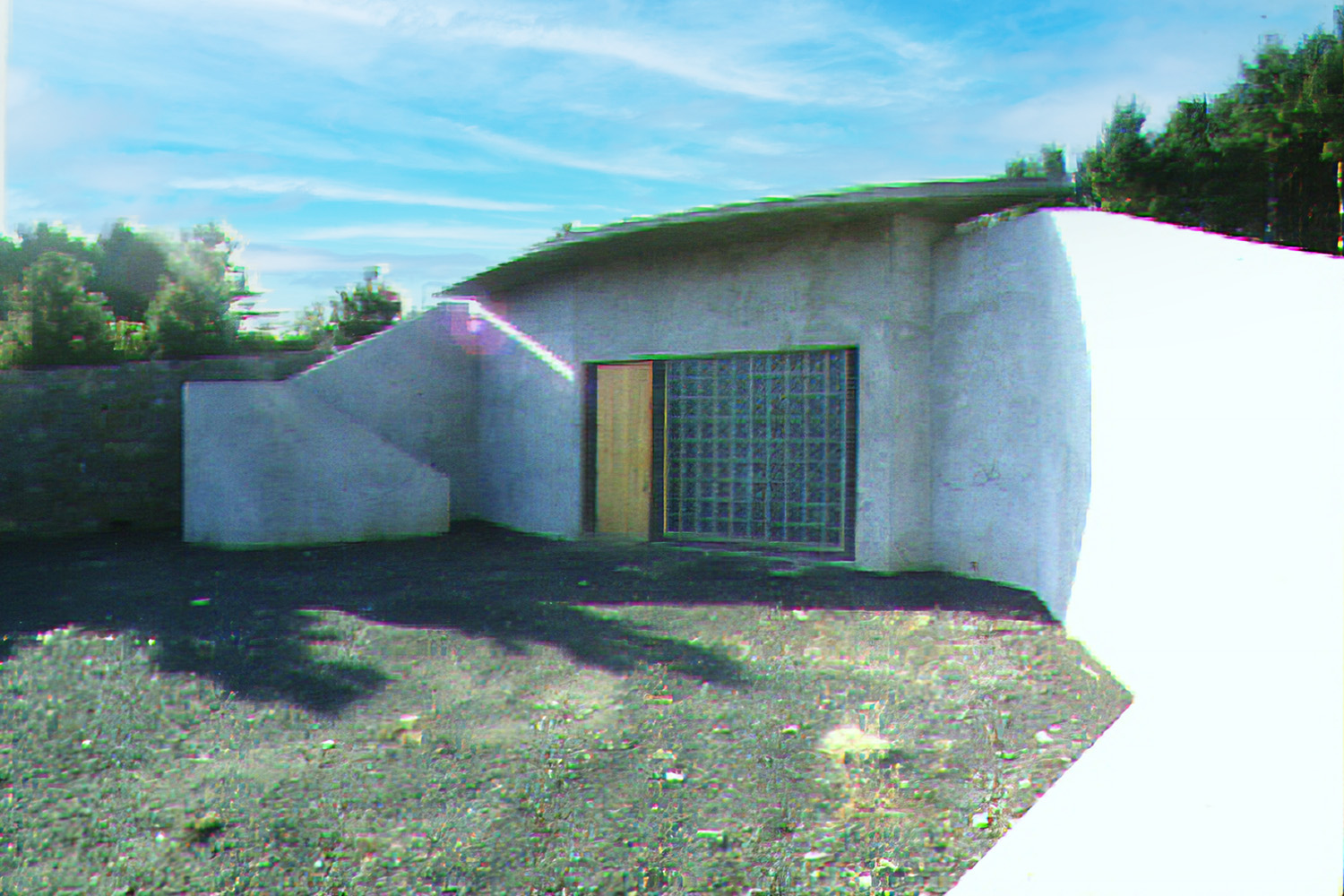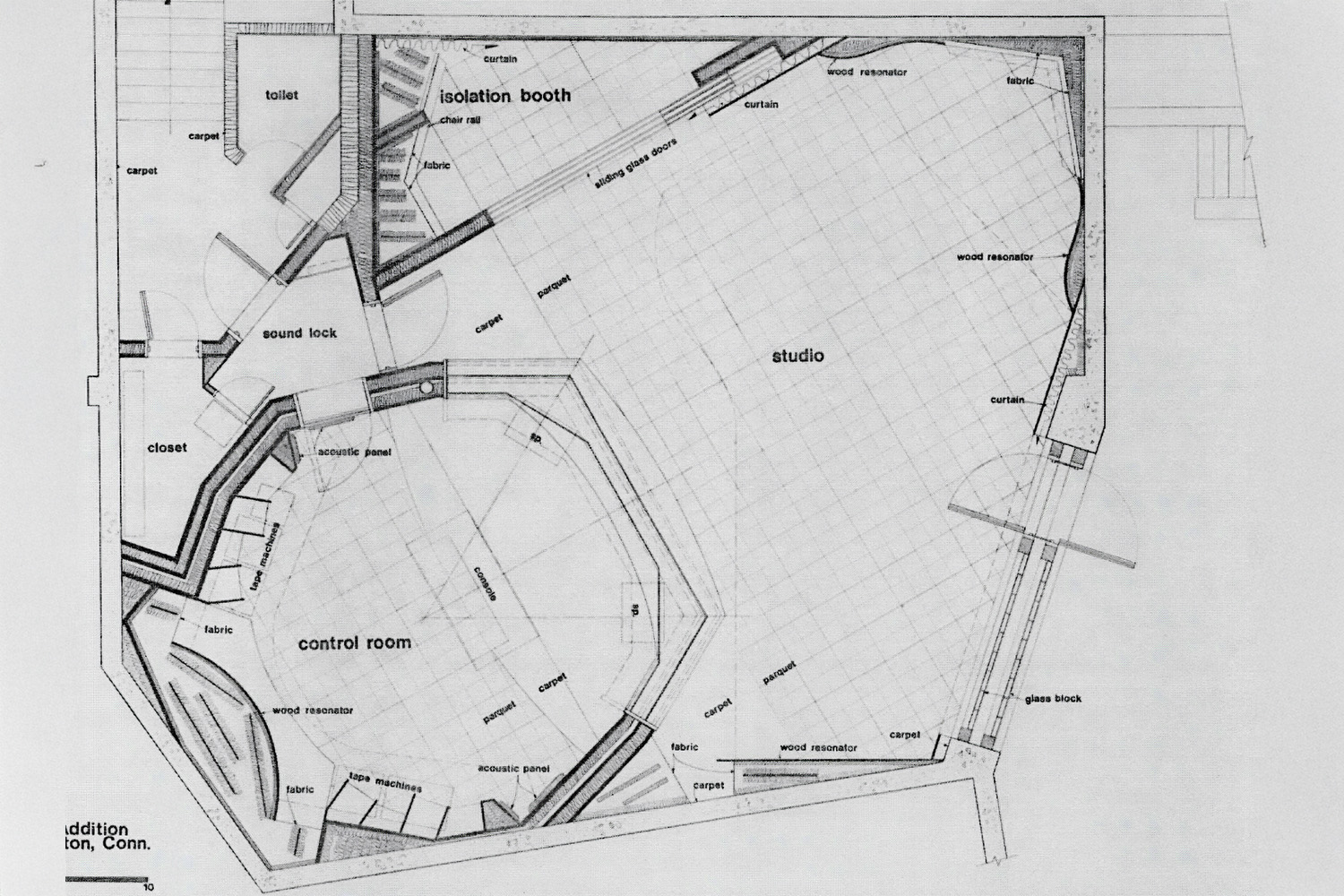Project Description
Overview
At the height of KISS’s stardom in the late 1970s, lead guitarist Ace Frehley purchased a four-acre property in Wilton, CT, a quiet residential town 40 miles north of New York City. Frehley was eager to build out a recording studio in the basement of his new home, and was introduced to John Storyk by mutual friend Eddie Kramer. When Frehley’s basement was deemed unsuitable for the project, he and Storyk devised the concept for Ace in the Hole.
The initial idea grew out of a recommendation from Storyk to build a separate building on his property for the studio space, book-ended by a joke about linking it to Frehley’s house with an underground tunnel. When Frehley took him at his word and encouraged him to do just that, Storyk partnered with Kramer to design the studio in earnest and create one of the most unique projects in his oeuvre.
Ace in the Hole consisted of a curved concrete bunker, sunk 6 feet into the ground near the rear of Frehley’s property. The then state-of-the-art recording studio utilized room-in-room construction for acoustic isolation, and consisted of a moderate-sized control room, a live room large enough to house a full 4-5 piece band, and a small iso booth. Fully spec’d by Kramer, the control room was outfitted with a MCI 600 series automated console, MCI JH-16 2″ 24-track tape machine with full remote, and two MCI 100A 2-track tape machines for mix downs. As promised, the studio was connected to Frehley’s house via an underground tunnel with a skylight and built-in bathroom.


